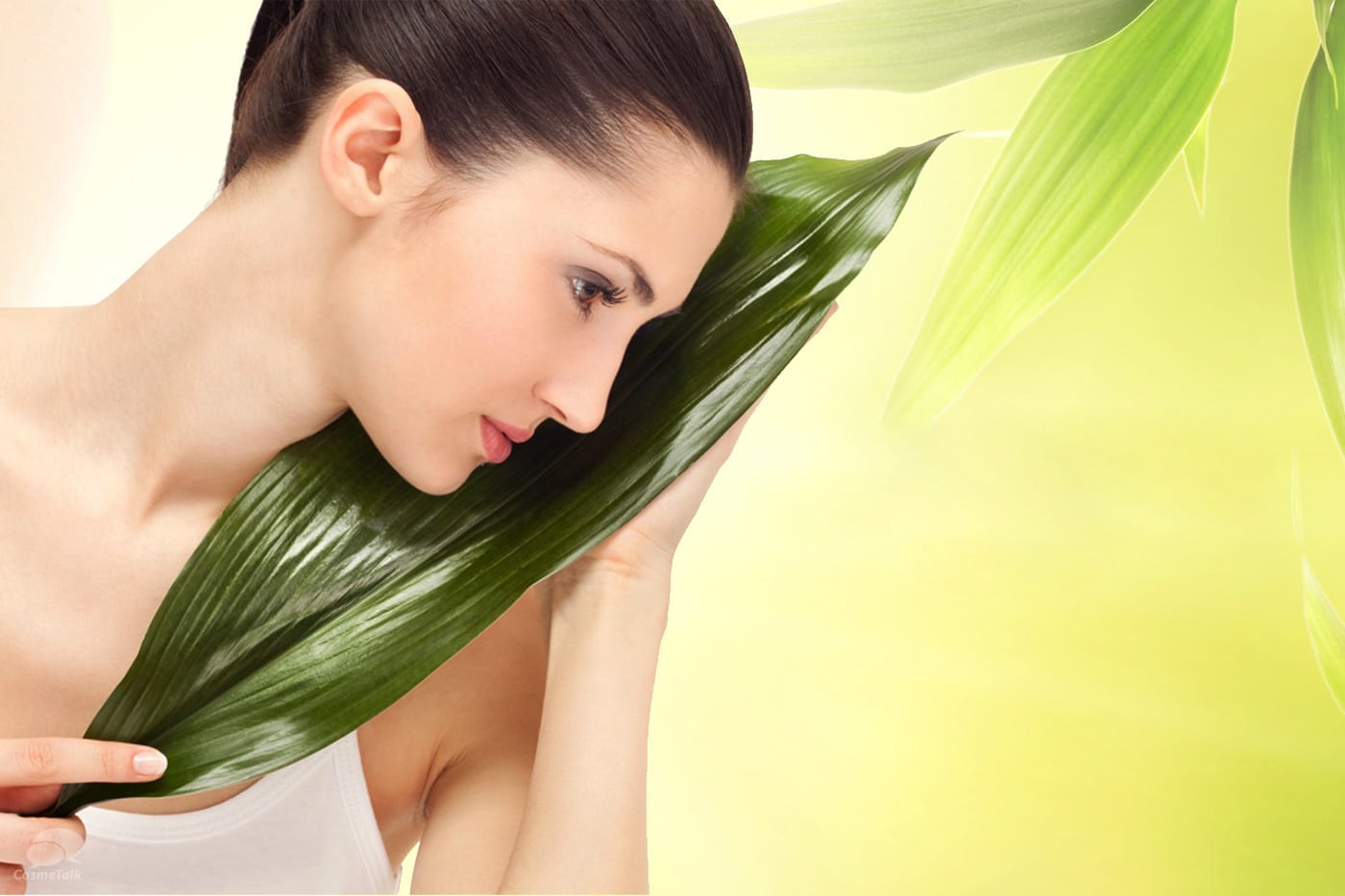There’s been an ongoing frenzy in the skincare industry around stem cell therapy. And no, not the stem cells that Oprah controversially had her eyes on. We’re talking about plant-based stem cells.
You might have heard about the much disputed use of human stem cells in anti-aging beauty products. Although they may have served some regenerative purposes, they failed to serve the ethics behind this practice.
However, the interest in the reparatory proprieties of human stem cell treatments has been redirected towards plant stem cells. Presently, an increasing number of beauty products label “stem cells” on their ingredients list.
Although we associate the term with the embryonic origin, the ingredients are always going to originate from plants. Unless you’re Oprah, maybe?.
Considering their popularity, it’s worth investigating how this botanical stem cell therapy benefits the (aging) skin.
Read on to find out whether these cells live up to their reputation as the newly-discovered skincare gems or represent mere plant extractions.
What is stem cell therapy?
Simply put, stem cells are a unique type of cells that can grow into multiple variants of other cells. In humans, embryonic stem cells can develop into different cells such as skin cells, nervous, muscle cells, etc.
In plants, stem cells are fundamentally different, but they serve similar regenerative functions. The cells live in the meristems of the plant and they help the healing process of a plan that suffered a lesion.
Both human and plant stem cells are similar in the way they function, specifically in self-renewal and repairing processes. However, plant stem cells have a higher antioxidant value, which is why it’s beneficial for the skin.
The antioxidants in the cellular plant components act as a protective shield against damaging free radicals that harm your skin. Botanical stem cells also confer anti-aging and anti-inflammatory treatments.
Why use plant stem cells?
Think about it: plants have been around long before us. Their longevity has made some species as old as Stonehenge. They are capable of enduring harsh weather fluctuations and climatic conditions.
Not only that they have highly adaptive survival tactics, but they also thrive in the most austere ambiences. Plants such as the Californian redwood trees that have been there for hundreds of years or the Swiss apples which are rich in phytonutrients and proteins, are just examples of natural examples of endurance and vitality.
These proprieties signify that there are certain undifferentiated cells that are responsible for such results. They are the plant stem cells, located in the meristems of the plant.
These represent the incipient form of plant energy that is in charge of supplying the nutrients throughout the structure of the plant, thus forming its numerous tissues and organs.
Due to the plant’s immobility and incapacity to flee from danger, this entire mechanism plays a protective and self-conservation role in the plant’s lifecycle.
Plant stem cells basically possess the ability to reconstruct themselves into new cells and cell types. This means that if climatic or environmental disruptors damage the plant, these cells sustain, repair and redevelop into new cell types.
Plant stem cells for skin repair
For skincare functions, we want to generate new cells in order to grow or regenerate specialized tissue cells. Plants stem cells possess the capacity of self-repair and growth into new cell types.
They help repair and regenerate the plants from the assaults of the external environment, giving them wound healing abilities.
What we need is to harness this regenerative medicine for our own skin through stem cell therapy.
The botanical stem cells are immortal as they never undergo the ageing process and keeps on regenerating themselves, giving birth to specialized and unspecialized cells.
They possess the potential of growing into any organ, cell or tissue in the body. Due to their multifunctional ability, they generate a powerful balm of nutrients that comprise of an abundance of amino acids, proteins and sugar optimal for skin barrier protection.
How are the cells harvested?
There is a complex and meticulous extraction process behind the seemingly straightforward stem cell therapy.
Plant stem cells are cultivated in labs, where they are protected from external disruptors like pollutants or pesticides. This secures the purity of the extracted cells while reducing the environmental impact at the same time.
Issues with collecting the cells and availability in the natural environment highly limit the amount and quality of the ingredients. Yet because the cells are harvested in secure labs, it is easier to monitor and regulate their quality
The process involves creating a superficial wound that the plant wouldn’t invest too resources much recovering from. This traumatizes the plant and results in a plant callus.
Once the callus heals, the scientists extract the nutrient balm out of it. They add water or glycol to it and grow it in a Petri dish. The process is almost similar to tea-making.
This results in the production of stem cell cultures which are then mixed into the various skin care formulations.
Function of stem cells culture in skincare
Plant stem cells are not the actual living stem cells, but rather the extracts inside them. In stem cell based cosmetic products, the cells aren’t alive because of the time the product spends on shelves before the actual cell stem therapy.
This doesn’t mean they’re ineffective.
Due to their rich antioxidant charge, they have visible effects on reducing the appearance of wrinkles and fine lines, pigmentation and inflammation.
With the help of these stem cells, the traumatized or damaged skin initiates the recovery process. These plant cells act as potent anti-oxidants and are significant for inflammation, protection from UV rays, photodamage and slowing down the cells ageing process.
Types of plant stem cell culture
- Swiss apple and edelweiss plant stem cell
The most popular varieties of stem cell cultures are Swiss apple and edelweiss. Both of these stem cells help in healing the damaged or inflamed skin tissues. It helps in stimulating the properties of dermal and epidermal repair.
It is also a potent antioxidant that combats the internal as well as external ageing factors along with regulating the skin’s adaptability to the oscillating climatic conditions.
- Lilac plant stem cell
Another innovative plant stem culture found in the market is lilac plant stem culture. According to different studies the enzyme generated by these stem cultures causes a 40% reduction in acne lesions.
It acts as a tyrosinase inhibitor and helps in slowing down the production of sebum.
It’s also been used in the skin lightening products as it has been found to be beneficial in post-inflammatory hyperpigmentation. It has anti-inflammatory qualities, decreases the trans-epidermal water loss and is a highly potent antioxidant.
- Argan stem cell
This is another botanic stem cell which helps in accelerating the skin’s natural process of repair while toning, firming and tightening the skin. It also revitalizes and protects the dermal layer of skin.
There are numerous studies indicating that it works in the dermis and helps in reducing the depth of the wrinkles by 26% along with increasing skin density and stimulating the production of collagen and elastin.
The above mentioned stem cells are just the few out of 20 that are presently available in the market. There are numerous plants that are continuously researched by specialists for converting their mediums and cultures into skincare products.
How do they impact skincare?
The cultures grown from plant stem cells are power packed with potent anti-oxidants, amino acids , sugars and proteins that stimulate and invigorate the damaged and sluggish skin cells affected by aging.
The direct result of stem cell therapy is the improvement of the overall health of skin cells and provision of fortified protection against free-radicals.
Botanical stem cells offer a plump skin aspect, firm up loose-looking skin, reduce the appearance of age-related imperfections, promote an even tone.
This also helps in fighting against the cells’ decay, as the nutrients in these stem cultures help in preserving the functions of skin.
Benefits of botanical cultures in present skincare
Although the plant stem cell cultures cannot replace the significance and effect of alpha hydroxy acids in skincare, they can definitely support and enhance the effects of powerful antioxidants such as peptides, Vitamin C and Retinoic acid, that helps in skin stimulation.
- Strengthening and empowering skin regeneration process
The aim of using botanical cultures is to energize and strengthen the process of skin cells regeneration, repair and UV rays protection. Additionally, they supply high quality anti-oxidants by complementing active ingredients in the skin care product formulations.
- Removing ethical concerns
The use of botanical stem cells cultures has also helped in alleviating the moral procurement concerns that strongly connect to the human stem cells culture.
Foreseeing the Future
If we visualize the future of plant stem cell therapy, we would see that it won’t be categorized as an “alternative” anymore. We are now paving the way to botanical stem cells constituting the main source of proven reconstructive functions.
There is a tremendous variety of plant options available for stem cell culture and with each passing year new stem cells will be available through stem cell research and study, further enhancing the benefits for our skin.
Are you as hyped as us around this innovative anti-aging treatment or are you waiting for more concluding research?
Drop us a comment and share your thoughts.

















